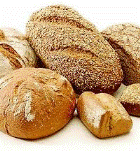Gut Function Initiative

Devin Rose Publications
Document Type
Article
Date of this Version
2010
Citation
British Journal of Nutrition (2010) 103: 1,514–1,524
doi: 10.1017/S0007114509993515
Abstract
The purpose of this research was to test the hypothesis that starch-entrapped microspheres would produce favourable fermentation profiles and microbial shifts during in vitro fermentation with the faecal microbiota from patients with inflammatory bowel disease (IBD). In vitro fermentation was carried out using a validated, dynamic, computer-controlled model of the human colon (Toegepast Natuurwetenschappelijk Onderzoek gastrointestinal model-2) after inoculation with pooled faeces from healthy individuals, patients with inactive IBD (Crohn’s disease (CD)) or patients with active IBD (ulcerative colitis (UC)). Starch-entrapped microspheres fermented more slowly and produced more butyrate than fructooligosaccharides (FOS) when fermented with the faecal microbiota from patients with active UC. When fermented with the microbiota from patients with inactive CD, starch-entrapped microspheres also fermented more slowly but produced similar amounts of butyrate compared with FOS. Starch-entrapped microspheres showed a greater ability to maintain a low pH during simulated-distal colon conditions compared with FOS. After fermentation with the microbiota from inactive CD patients, starch-entrapped microspheres resulted in lower concentrations of some potentially harmful gut bacteria, included in Bacteroides, Enterococcus, Fusobacterium and Veillonella, compared with FOS. These findings suggest that slow fermenting starch-entrapped microspheres may induce a favourable colonic environment in patients with IBD through high butyrate production, maintenance of low pH in the distal colon and inhibition of the growth of potentially harmful bacteria.


Comments
Copyright 2010, the authors. Published by Cambridge University Press. Used by permission